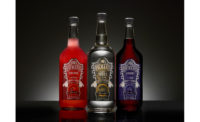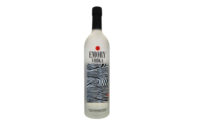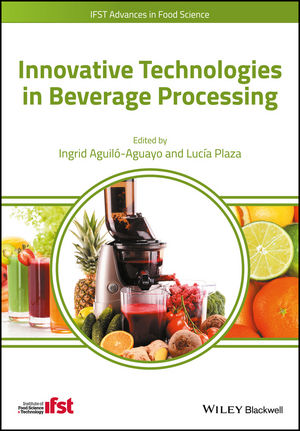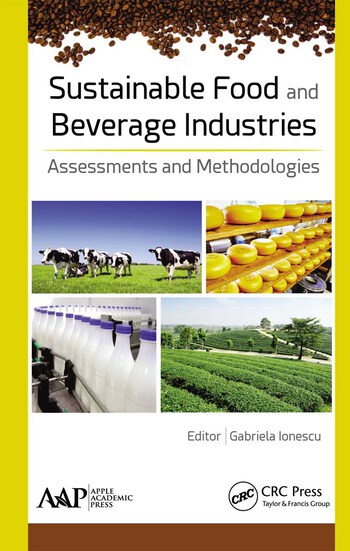Beverage brands expand flavor choices
Millennials drive flavor expansion




Remember when nothing said summer like sitting on Grandma’s porch and sipping a tall glass of ice-cold lemonade? The pure sourness and simple ingredients made taste buds dance.
Yet, as millennials’ palates have evolved and have gotten more adventurous, the demand for bolder, spicier and exotic beverage flavors are filling grocery and liquor store shelves like never before, according to Heather Young, food scientist at Mother Murphy’s Labs, Greensboro, N.C.
“We have thousands of flavors available and are creating new flavors every day. We have options for all types of categories including spicy and sour with flavors ranging from hot sauce and cinnamon to blood orange and grapefruit,” Young says.
Lebanon, Ohio-based Mane Flavor says there is a rising interest in citrus flavors, including classic lime, limeade, flavored lemonades, Ruby Red grapefruit, as well as Asian citruses, such as Satsuma, Mandarin and Yuzu. Big and bold flavors are being driven by consumers’ willingness to try new things and push the limits of spice.
“One of the biggest trends du jour is ginger,” Mane’s Beverage Marketing Director Derek Elefson says. “Ginger beer has gained a following as have brands of flavored alcoholic ginger beers, ginger ale, teas and in cold pressed juices. There’s also been an explosion in the revitalization of mules, particularly the Moscow Mule, which is made with vodka, lime and ginger beer.”
Vice President of Sales and Marketing for Downers Grove, Ill.-based Flavorchem Corporation Phil Sprovieri says that rose, lavender, hyacinth, jasmine, violet and other lightly floral flavors continue to be popular, while sweet-and-spicy cocktail pairings, including the Bloody Mary, tomato based combos, Caesar’s, ginger beers and Michelada, which combines beer, lime and hot sauce, remain strong in the beverage marketplace.
Jodi Horon, business development manager for beverages at Synergy Flavors, Inc., Wauconda, Ill., says alcohol trends include dry white wines, stouts, vodka, mules, craft beers and flavored malt beverages, while consumers wanting non-alcoholic beverages crave sparkling teas, cold brew coffees, fruity all natural sodas, root beer, ginger, green smoothies, caramel lattes and craft juices.
An Innova review of U.S. alcoholic and non-alcoholic beverage launches over the past three years reveals that spicy, chili flavors are found in a range of applications including juices, coconut water, beers, and spirits. For example, Taste Nirvana Coconut Water offers a variety with Thai chili extract.
Spicing it up
Sweet-and-spicy combinations are growing in popularity. Pairing of ethnic and spicy flavors in new combinations that offer heat and a brisk sweet note called “sweet heat” is trending with consumers. Both categories lean heavily on spices, particularly hot cinnamon and herbs such as basil, says Mother Murphy’s Young.
The growing Hispanic and Asian population has helped consumers develop more worldly palates craving new, exotic flavor combinations. Fruit flavors, like guava, papaya, starfruit, among many others, are increasingly popular choices for juices, sports drinks and carbonated and still beverages, according to Victoria Ward, marketing and consumer insights manager at David Michael & Co., Philadelphia, Pa.
“Millennials want to experiment when it comes to food and beverage choices. They place a lot of importance on experiences and are also driven by the unprecedented access today’s consumers have to global information and cultures,” she says.
Gabby Quintana, research chef and culinary mixologist at McCormick & Co., Hunt Valley, Md., agrees that Asian cuisine’s popularity has inspired mixologists to use ingredients such as Yuzu, Asian pear and ginger in beverage formulations.
“Beverage artists at both the bar and home are using culinary ingredients as inspiration for creativity. They aren’t afraid to infuse sweet-and-spicy elements such as Sichuan peppercorn and Thai basil into traditional cocktails like the mojito,” says Quintana.
Synergy’s Horon says that mules and hybrids are a big trend. “We have flavors combined with our essences like cucumber jalapeño lemonade, tamarind soda and fireball whiskey,” she says. She notes that the use of greens, including kale and spinach, in juice blends comprise the savory-like juice category, while jalapeño and turmeric are heavily trending in beverages as well.
“When it comes to heat, we have hot pepper flavors from chipotle to jalapeño and Sichuan pepper,” says David Michael’s Ward. “To satisfy the call for savory, we use spice flavors like chai, cinnamon, clove, star anise and Chinese five spice and can also provide smoky flavors like Lapsan Souchong, hickory and mesquite.”
Flavoring teas, waters and juices
Due to consumer demand, new flavors are hitting shelves regularly. In mid-May, Sanpellegrino Sparkling Fruit Beverages, Stamford, Conn., introduced a new flavor, Ficodindia e Arancia, which is infused with prickly pear and orange flavors to deliver a bold, sweet flavor with a hint of tartness. Produced in southern Italy, Ficodindia e Arancia Sparking Fruit Beverages are made with juice from premium Italian fruits to deliver a refreshing taste.
“Our new Ficodindia e Arancia, as aromatic as it is flavorful, transports you to the Sicilian countryside where sunshine and sea breeze fill the air,” said Grant McKenzie, vice president and general manager for Sanpellegrino brands, in a statement.
Synergy’s Horon says that Synergy Pure extract tea flavors like cucumber lime tea made with fresh essences; mango basil pepper tea with essences; and half and half tea with tea essence, are creating a fresh profile for consumers. Alcohol flavors like strawberry, basil, czarac and cocktail inspired flights including whiskey flavored with mint julep, honey-orange, among others, are also popular.
Lauren Williams, marketing manager of beverage flavors North America at Sensient Flavors, Hoffman Estates, Ill., says that savory flavors are a great fit for beer and water. “Savory flavors pique curiosity and create an opportunity for a flavored beverage with a naturally lower sugar content, which offers consumers a compromise between flavored beverages and plain water,” she says.
Other savory trends include fermentables, with kombucha being the most well-known example. “We’ve seen an exploration around drinking vinegars and shrubs, with flavors like plum vinegar, strawberry balsamic vinegar, apple vinegar and pickled jalapeños,” says Mane’s Elefson, who notes that these flavors could take a few years to reach mainstream.
California Custom Fruits & Flavors, Inc., Los Angeles, Calif., is seeing an increased interest in tropical flavor combinations, particularly in the carbonated water category including flavor combinations for both sweetened and unsweetened variations, with floral, fruit and vegetable combinations as the most sought after.
The company also offers spa themed waters in ginger-citrus, ginger-cucumber, lavender cantaloupe and tropical orange spice.
“Chai tea and bubble tea, which is also known as boba milk tea, are gaining popularity in beverage markets along with strawberry infused water,” says California Custom Fruits & Flavor’s Director of Flavor Development Philip Barone.
Back to the basics
An increased demand by consumers for new experiences in taste, aroma, color and texture have pushed beverage trends, but health, environmental and safety concerns have caused a shift towards a “back to basics” mentality.
Anton Angelich, group vice president of marketing at Virginia Dare, Brooklyn, N.Y., says consumers have a greater interest in clean label, simple sustainable locavore beverages. He suggests that natural, familiar flavors be added to new beverages that contain a beneficial fruit extract with a high ORAC value taste so it tastes more like actual fresh fruit.
“American consumers are looking for identifiable flavors and ingredients that are of domestic origin and believed to be healthy and safe, including blueberry, raspberry and sour cherry,” Angelich says.
While natural flavors are in demand, organic and non-genetically modified organism flavors are gaining popularity. However, raw material limitation and price to produce needs to be considered, notes Alex Scott, flavorist at Commerce, Calif.-based Gold Coast Ingredients, Inc.
“Natural flavor ingredients as well as organic and non-genetically modified oranism ingredients are pricier in comparison to artificial flavor ingredients. And sometimes raw materials are not available in natural or organic forms that may require a more complex formulation process,” says Scott.
Savory crave
McCormick’s Quintana says that consumers who love flavors such as sriracha are looking for new chili experiences and finding them in peri peri or Shoshimi Togarashi (Japanese 7 spice blend consisting of red pepper, white pepper, orange peel, nori, sesame seed, poppy seed and ginger). Quintana predicts that guajillo and tsin tsin and Aji Amarillo will flavor craft spirits and cocktails, while bacon in beverages will continue to be seen as a fad.
Mother Murphy’s says international flavors are trending, but popularity depends on the region. “A Tahiti distillery is marketing a cream liquor, which has vanilla from Tahitian vanilla beans, so using what you know and what is local can help mixologists come up with something unique and underutilized from a flavor standpoint,” Vice President Al Murphy says.
Increasing the shelf life of beverages is also important. McCormick recently released FlavorCell encapsulation technology that provides longer shelf life for flavors used for dry beverage applications, such as drink mixes, tea bags and coffee pods, while delivering truer flavor profiles and controlled flavor release.
While there are many new beverage flavors, tastes and textures, Synergy’s Horon says beverage-makers need to be aware of challenges with stability, shelf life, clarity and color. “Color plays a huge part in how people perceive flavor, and we take pairing colors and flavors into account when creating beverages because people taste and assess with their eyes first,” Horon says.
Sensient Flavor’s Williams concludes, “The world is the beverage consumer’s oyster, or extract or za’tar spice flavor blend. With our consumer insights program, Trends to Taste, we’re focused on helping customers decide what flavors are right for their brand and strategy. It’s an exciting time for the beverage industry, and there’s even more trends to be discovered.”
Looking for a reprint of this article?
From high-res PDFs to custom plaques, order your copy today!











